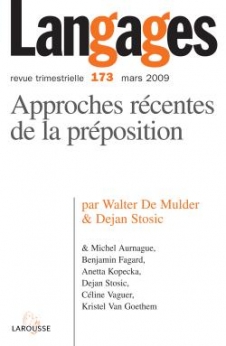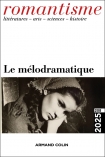
Langages n° 173 (1/2009)
Pour acheter ce numéro, contactez-nous
Recevez les numéros de l'année en cours et accédez à l'intégralité des articles en ligne.
This paper deals with the analysis of endroit (‘place’) considered through its combination with the preposition à (‘at’). In its “dependent” use – explicit or implicit reference to an encompassing element –, this term denotes fixed entities in a frame of reference, to which a space portion is sometimes associated (main ingredients of the notion of “location”). However, the semantics of endroit does not indicate the position of the entity denoted and its association with à requires further linguistic material to be added (the locating use of à selects “specified locations”). In its “autonomous” use, endroit identifies geographical locations and buildings rather than objects. Like common nouns of geographical locations, its combination with à needs to specify the localization of the location introduced. But the specification often entails a shift from the autonomous use to the dependent use, illustrating the tenuous frontiers between them.

